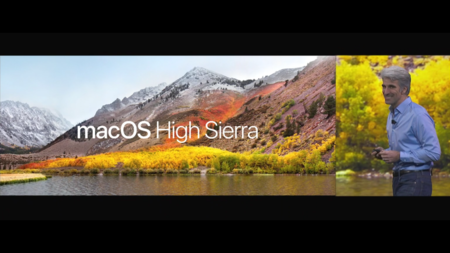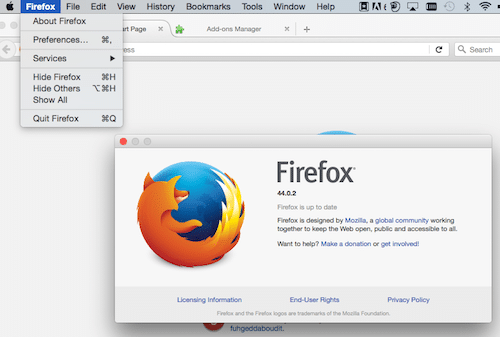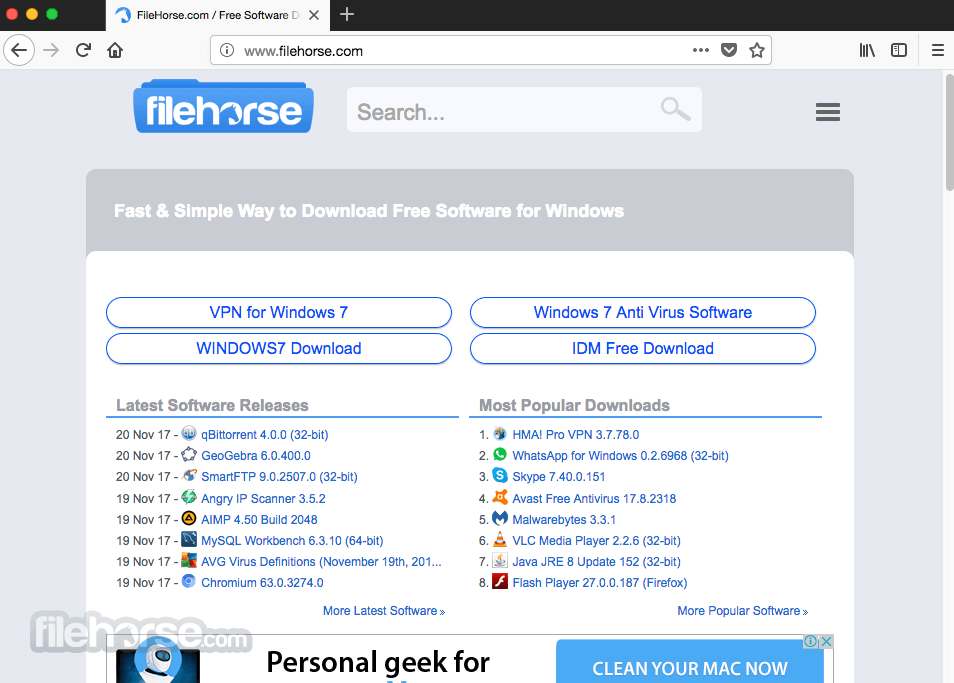Mozilla Firefox for Mac is a versatile and feature-packed browser with advanced security features that can hide shared user activity and has customizable privacy settings that protect your system from unwanted tracking and harmful software. Mozilla Firefox is perfect for casual searches as well as more complex queries.

When it comes to installing your new CAC reader onto your home computer, there’s a doubt that installing on Mac is much more complicated. Often, you’ll need to install a CAC Enabler just for your Mac to recognize the hardware. But don’t worry in this handy guide, we’ll walk you through how to install a CAC enabler for Mac and which one to choose.
MacOS Sierra is available as a free upgrade right now, but many people got early access to it. Firefox will run just fine on a mac, in fact, many Firefox developers use macs exclusively! For some additional tips, here's an article on getting started with Firefox, Get started with Firefox - An overview of the main features. Is Firefox browser suitable for a Mac running High Sierra 10.13.6? 2 replies 1 has this problem 1401 views; Last reply by CORKULIKE 2 years ago. 9/19/18, 6:48 AM. Firefox will run just fine on a mac, in fact, many Firefox developers use macs exclusively!
Here’s the thing…. Mac has many different OS’s which means that there are many different CAC enablers. And some will work for particularly OS’s only.

MUST READ IMPORTANT INFO BEFORE YOU BEGIN
Before you get started downloading and installing your CAC Enabler, there is some information that you need to be aware of:
- Only download and install ONE CAC Enabler. Multiple CAC Enablers can cause your CAC Card reader not to work. If you currently have an incorrect CAC enabler installed, you need to uninstall and remove it before getting the correct one. This includes built-in Smart Card Readers for the newer OS’s.
- Some of these CAC Enablers will ask for a Keychain Password. You should already have this information. It’s your CAC PIN. But before you enter this information, make sure you’ve already selected your CAC Certificate. And you need to use your full CAC pin. Failure to do so can actually lead to you getting locked out of your CAC Card. If this happens, you’ll have to go to your nearest ID Card Office or PSD to get it unblocked.
- After successfully installing your CAC Enabler, you need to restart your computer before trying to access any CAC protected site. This ensures that your computer has properly recognized and installed the CAC Enabler.
- Just because you’ve properly installed and set up your enabler, that doesn’t mean that it will work with all browsers–particularly Firefox. As popular of a browser it is, Firefox is notorious for not allowing CAC-protected sites to be accessed. This is why I recommend using Google Chrome. It has the least obstructions for you when it comes to using your CAC Reader.
What CAC Enabler Do You Need For Your OS?
In order to make sure that you download the right OS, be sure to use our handy Table of Contents to jump to the proper section.
And with that, let’s get your Mac system CAC Card ready!
Catalina (10.15.x)
If you’ve purchased a Mac with the Catalina OS installed, STOP RIGHT HERE.
Catalina comes pre-equipped with a built-in CAC Enabler. This means you do not need to install a third-party program. If you do, it may interfere with your built-in enabler and cause your CAC to not be recognized. Just be sure that you have the proper DOD certificates installed.
But what if you purchased your Mac and then upgraded to the new system?
If you haven’t installed any third-party enablers, the built-in function should automatically start working. But if you have previously installed any third-party CAC enablers, you’re going to have to uninstall and completely remove those first.
Mojave (10.14.x)
Similar to the Catalina OS, Mojave also has a built-in Smart Card Reader. This means that a third-party CAC enabler program may not be necessary. So before downloading any other enabler, test out the built-in first–just make sure you have the proper DOD certificates needed.
If your Mojave’s built-in reader is not working, then you can proceed to pick up another CAC enabler. There are 4 verified readers that work for Mojave that we know of.
Firefox Para Mac High Sierra
Each of these should work for any type of CAC Card.
High Sierra (10.13.x)
High Sierra is another Mac OS with a built-in Smart Card reader. However, unlike Mojave or Catalina, you cannot access CAC-protected sites through Safari. They are not supported through Safari in this OS.
You need to use Google Chrome for optimal results. If you are adamantly opposed to using Chrome, I’d recommend to go ahead and update your Mac OS to Mojave or Catalina (if supported). Afterwards, you should find you don’t need a CAC enabler as long as you have the proper certificates.
However, if things aren’t working out the way they should, you do have some options for third party CAC enablers.
These have been verified to work with High Sierra and with every CAC Card type we’ve come across.
Sierra (10.12.x)
Sierra is the last of the Mac OS’s that has a built-in Smart Card Reader. However, you need to be aware that this reader will not function with the Safari browser even with the proper certificates.
You’ll need to utilize Google Chrome along with the proper DOD (or other) certificates.
There have been reports of the Sierra built-in CAC reader failing to operate properly. And in that case, you’re going to need to download one of these verified CAC enablers:
These CAC Enablers work with every type of CAC Card.
One thing to note is that if you decide to utilize PKard with Sierra, you need to make sure that you’re using PKard version 1.7 or higher.
El Capitan (10.11.x)
Unlike its newer OS counterparts, El Capitan does not come with a built-in smart card reader. You will be required to download and install a third-party program. Thankfully, there are 5 different CAC Enablers you can use.
One thing to note is that Smart Card Services will not work with all types of CAC Cards. If your CAC Card is designated as Oberthur ID One 128 v5.5a D, Smart Card Services cannot read it. You can find this information on the back of your CAC card itself near the magnetic strip.
This can be solved one of two ways. Either opt for a different enabler or get a new CAC Card.
Yosemite (10.10.x)
Yosemite requires a third-party enabler to be installed in order for your CAC Card to be recognized. There are 5 different verified options for Yosemite users:
Although a verified option, we recommend against using Smart Card Services. The reason for this is that Smart Card Services doesn’t accept all types of CAC Cards–particularly those labeled Oberthur ID One 128 v5.5a D.
Mavericks (10.9.x)
Mavericks is another Mac OS without a built-in Smart Card Reader. This means that you’re going to need to download a CAC Card Enabler. We’ve found five different platforms that work with this OS.
However, we suggest steering clear of Smart Card Services if you’re carrying the Oberthur ID One 128 v5.5a D CAC Card. This enabler does not recognize this particular type of CAC Card.
Mountain Lion (10.8.x)
Since Mountain Lion OS has no built-in Smart Card Reader, you’ll have to avail of a third-party CAC Card Enabler. There are 5 different options to choose from for this platform.
However, if you’re using the CAC Card type, Oberthur ID One 128 v5.5a D, steer clear of Smart Card Services. They don’t recognize this type of card.
Lion (10.7.x)
Lion is one of Mac’s older operating systems. But that doesn’t mean you’re completely out of luck if need to use a CAC card on it. There are 4 different options you have.
It’s worth mentioning that if you are planning on using Smart Cards Services, ensure you don’t have an Oberthur ID One 128 v5.5a D CAC Card. The program doesn’t work with the typing.
Snow Leopard (10.6.x)

The first recommendation I have for Snow Leopard users is to upgrade their system as soon as possible. But if due to constraints you are unable to, there are still a few paths you can take when it comes to ensuring your CAC Card can be read.
Firefox For Mac High Sierra
Just don’t opt for Smart Card Services if you’re using an Oberthur ID One 128 v5.5a D CAC Card.
Leopard (10.5.x)
If you’re still using Leopard, our first recommendation is to upgrade your OS immediately. However if you’re unable to, there’s still hope for using a CAC Card on your computer.
Your available options for CAC Card Enabler are:
However, TENS will only work if your computer has an Intel processor. It won’t work if you’re using a PPC.
Again, the first recommendation for Leopard is not downloading a new CAC enabler but updating your system.
Our Top CAC Enabler Picks for All Operating Systems
When it comes to which enablers we like best, it boils down to two.
PKard and ActivClient for Mac.
Either one of these is compatible with just about every OS on this list–with the exception of Catalina (Be sure to use their built-in enabler.)
Firefox For Mac Os High Sierra
Plus they have vendor support. And that can be quite handy if you’re having issues with your CAC enabler. However, they don’t come free. ActivClient for Mac rings in at around $50 while PKard is available for around $40.
A DNS cache or DNS resolver cache, is a temporary database of DNS lookups on the OS and browser. It consists of the records of recent as well as attempted visits of websites along with domains. To troubleshot cache poisoning or other internet connectivity issues, you may need to flush the DNS cache. The action will remove all the DNS entries. Besides, it also gets rid of invalid records. Let’s check out the way to clear the DNS cache on your Mac.
What does Clearing the DNS cache do?

If you are having trouble accessing a website on your Mac, or if webpages do not load properly, clearing DNS cache will help. It also lets you correctly see the new version of a website, in case the site has recently moved its servers. It does so by clearing the outdated entries and fetching the new ones. Finally, regularly flushing DNS cache may also help in hiding search behavior and offer security against manipulation.
How to Flush DNS Cache on Mac
For macOS Catalina, Mojave, High Sierra, Sierra, and macOS El Capitan the command is the same.
- Open Terminal using Launchpad or Use Finder → Applications → Utilities, or Spotlight Search (Command+Space Bar) for this.
- Now, you need to enter the command given below.
sudo killall -HUP mDNSResponder - Enter your Mac’s password and then press the enter key again.
Done! Now, you may have to wait for a few moments until the DNS cache is completely flushed out. Once it’s done, a verbal audio alert will confirm that the DNS cache is flushed on your Mac.
You have successfully cleared the DNS Cache on your Mac! Most likely, now you will have no trouble visiting websites or seeing webpages.
Firefox For Mac Download
Clear DNS Cache in Older macOS versions
If you are using an older version of macOS, then here are the commands for those.
To clear DNS cache on macOS Yosemite, enter the following syntax:
sudo discoveryutil udnsflushcaches
To clear DNS cache on macOS Lion, Mountain Lion, and Mavericks, enter the following syntax:
Download Firefox For Mac High Sierra

sudo killall -HUP mDNSResponder
That’s all, folks.
Download Mozilla Firefox For Mac
Signing off…
Hopefully, getting rid of the DNS cache will no longer be a big deal for you. Additionally, if you like, you can also choose to clear DNS Cache only for the Google Chrome browser. For this enter chrome://net-internals/#dns in Chrome’s address bar. Next, click on Clear host cache.
You may also like to check out:
If you have any questions related to this, please toss it up in the comments below.
The founder of iGeeksBlog, Dhvanesh, is an Apple aficionado, who cannot stand even a slight innuendo about Apple products. He dons the cap of editor-in-chief to make sure that articles match the quality standard before they are published.
Firefox For Mac Update
- https://www.igeeksblog.com/author/dhvanesh/
- https://www.igeeksblog.com/author/dhvanesh/
- https://www.igeeksblog.com/author/dhvanesh/
- https://www.igeeksblog.com/author/dhvanesh/